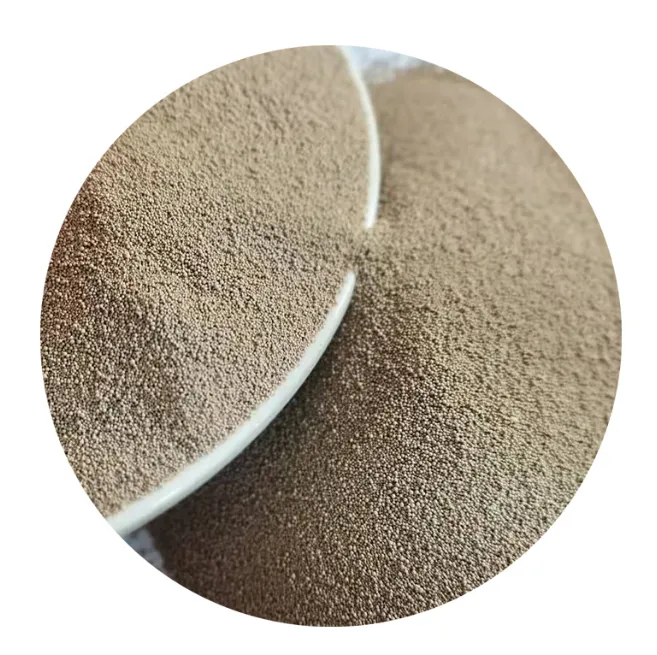In the dynamic world of metal casting, understanding the importance of different types of foundry sand, the role of a stainless steel sand casting foundry, and the best way to sand stainless steel is essential. Moreover, addressing foundry sand contamination and conducting thorough foundry sand testing are critical to ensuring superior product quality. Each of these aspects contributes to the overall success of casting operations.

Different Types of Foundry Sand and Their Uses
Understanding the different types of foundry sand is key to selecting the right material for specific casting processes. Among the different types of foundry sand, green sand, silica sand, and chromite sand are the most commonly used. Green sand, a blend of silica sand, bentonite, and water, is favored for its excellent moldability and cost-effectiveness. Silica sand, a staple in the different types of foundry sand, is known for its high melting point and versatility.
Chromite sand, another option among the different types of foundry sand, offers superior thermal conductivity, making it ideal for high-temperature applications. Each of these different types of foundry sand serves unique purposes, enabling foundries to meet diverse manufacturing requirements. By selecting the right material from the different types of foundry sand, foundries can ensure optimal performance and product quality.
Stainless Steel Sand Casting Foundry: Precision and Expertise
A stainless steel sand casting foundry plays a vital role in producing high-quality stainless steel components. These facilities use advanced techniques to create intricate designs with exceptional accuracy. A reputable stainless steel sand casting foundry combines state-of-the-art equipment with skilled craftsmanship to deliver durable and reliable products.
The expertise of a stainless steel sand casting foundry extends to selecting the appropriate sand type and binder system for specific applications. By partnering with a trusted stainless steel sand casting foundry, industries can ensure that their requirements for precision and performance are met. The value of a stainless steel sand casting foundry lies in its ability to handle complex projects with consistent quality.
Best Way to Sand Stainless Steel for Perfect Finishes
Determining the best way to sand stainless steel is crucial for achieving smooth and flawless surfaces. The best way to sand stainless steel involves using the right abrasive tools and techniques to remove imperfections without damaging the material. Choosing the best way to sand stainless steel ensures that the final product meets aesthetic and functional standards.
The process begins by identifying the best way to sand stainless steel, which includes selecting appropriate sanding grits and equipment. Wet sanding, often regarded as the best way to sand stainless steel, minimizes heat generation and reduces the risk of scratches. By adopting the best way to sand stainless steel, manufacturers can enhance the quality and appeal of their products.
Addressing Foundry Sand Contamination Effectively
Managing foundry sand contamination is essential for maintaining the integrity of casting processes. Foundry sand contamination occurs when foreign particles, moisture, or chemicals compromise the sand's quality. Identifying and mitigating foundry sand contamination helps prevent defects and ensures consistent performance.
Regular testing and analysis are key to detecting foundry sand contamination. By implementing stringent quality control measures, foundries can minimize the impact of foundry sand contamination on their operations. Addressing foundry sand contamination proactively safeguards the reliability of casting outcomes and enhances productivity.
Importance of Foundry Sand Testing for Quality Assurance
Conducting comprehensive foundry sand testing is a critical step in ensuring the effectiveness of sand used in casting processes. Foundry sand testing evaluates properties such as grain size, permeability, and moisture content to determine the sand's suitability for specific applications. Reliable foundry sand testing prevents issues such as shrinkage and defects in the final product.
Advanced techniques used in foundry sand testing include mechanical analysis and thermal conductivity measurements. By prioritizing foundry sand testing, foundries can optimize their materials and improve production efficiency. The role of foundry sand testing in achieving high-quality results cannot be overstated, as it lays the foundation for successful casting operations.
The interplay between different types of foundry sand, the expertise of a stainless steel sand casting foundry, and the best way to sand stainless steel drives advancements in metal casting. Addressing challenges like foundry sand contamination and emphasizing foundry sand testing ensures that manufacturers achieve superior results. By staying informed and adopting best practices, the casting industry can continue to thrive in a competitive market.
Post time:மார்ச் . 24, 2025 15:59Next:Efficient Ceramic Sanding Solutions
